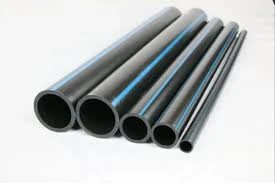Sep . 19, 2024 13:15 Back to list
pe pipe fittings
Understanding PE Pipe Fittings A Comprehensive Overview
Polyethylene (PE) pipe fittings are integral components in modern plumbing, irrigation, and drainage systems. Known for their durability, flexibility, and resistance to corrosion, these fittings are widely used in applications ranging from residential plumbing to large-scale agricultural projects. This article explores the essential features, benefits, applications, and installation processes associated with PE pipe fittings.
Key Features of PE Pipe Fittings
PE pipe fittings are made from high-density polyethylene, which offers remarkable strength-to-weight ratio and longevity. They come in various shapes and sizes, including elbows, tees, reducers, and couplings, allowing for versatile system designs. One of the standout features of PE fittings is their ability to withstand extreme temperatures and adverse weather conditions, making them suitable for both underground and above-ground installations.
Benefits of Using PE Pipe Fittings
1. Corrosion Resistance Unlike metal fittings, PE fittings do not rust or corrode, ensuring a longer service life and reducing maintenance costs.
2. Flexibility The flexible nature of polyethylene allows for easy installation in rugged terrains and tight spaces without requiring extensive support structures.
3. Lightweight PE fittings are significantly lighter than their metal counterparts, which not only eases transportation but also simplifies installation processes.
4. Chemical Resistance PE fittings are resistant to many chemicals, making them ideal for applications involving aggressive substances.
5. Cost-Effective Given their longevity and reduced maintenance needs, PE pipe fittings are a cost-effective choice for both residential and industrial applications.
pe pipe fittings

Applications of PE Pipe Fittings
PE fittings are used in a diverse range of applications, including
- Water Supply Systems They help transport potable water efficiently, ensuring safe delivery to households and businesses.
- Irrigation Systems In agricultural settings, PE fittings are crucial for efficient water distribution, supporting sustainable farming practices.
- Sewer and Drainage Systems PE fittings are commonly used in wastewater systems due to their ability to resist chemical corrosion.
- Gas Distribution These fittings are also utilized in natural gas pipelines, where durability and safety are paramount.
Installation Process
Installing PE pipe fittings involves several steps to ensure a secure and leak-free connection. Proper cutting, fitting, and sealing techniques must be employed to achieve optimal results. Heat fusion is a popular method, whereby the fitting and the pipe ends are heated and then pressed together to form a strong bond.
In conclusion, PE pipe fittings are a reliable and efficient solution for various piping needs. Their numerous advantages make them a preferred choice in many industries, driving improvements in infrastructure development worldwide. As demand for durable and sustainable materials increases, the use of PE pipe fittings is likely to grow, reaffirming their place as a cornerstone in modern piping systems.
-
PP U-channel: Chemical-Resistant, Lightweight & Durable
NewsAug.10,2025
-
Transparent PVC Pipe: Clear Flexible Tubing for Fluids
NewsAug.09,2025
-
Durable PP Rigid Sheet: Versatile & High-Quality Plastic Panels
NewsAug.08,2025
-
Premium Glossy PP Rigid Sheet – Durable & Versatile
NewsAug.07,2025
-
High-Quality HDPE Sheet | Durable Plastic Panels
NewsAug.06,2025
-
High-Precision PVC Rigid Sheets for Vacuum Forming | AI-Optimized
NewsAug.05,2025

